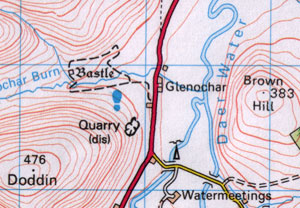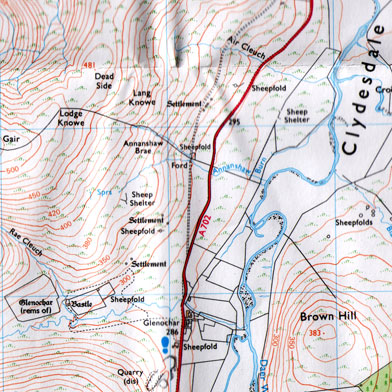|
Source
of the River Clyde
|
|||||
|
Click on the left
side of the image below to go back to the previous page
or, on the right side of it to go to the next page. |
|||||

|
|||||
|
01 As discussed elsewhere on the Queensberry,
Durisdeer
and Steygail
and Enterkin Pass web galleries the actual place where the
River
Clyde first takes it's name and becomes "the Clyde"
is a bit of an enigma. In Glasgow for example it was commonly
held that the source of the River Clyde was Tinto
Hill. There is also a more realistic saying that the Rivers
Tweed, Annan
and Clyde all rise from the same hill and there is a Clyde Law
(OS Ref. NT027171) which is certainly near the sources of the
Tweed and Annan Rivers though there is a short descent and ascent
in between. Clydes Burn runs west off Clyde Law, runs past a place
called Little Clyde and joins the conjoined waters of Daer and
Potrail just south of Elvanfoot (OS Ref. NS963155). But I think
the odds have got to be very firmly on the place you are looking
at in these pictures (OS Ref NS 954137). |


So it would look likely that Ordnance Survey have come round to the notion of the meeting of the Potrail and Daer Waters as being the starting point of the River Clyde as such and with all the various burns and waters further upstream being collectively the head waters.